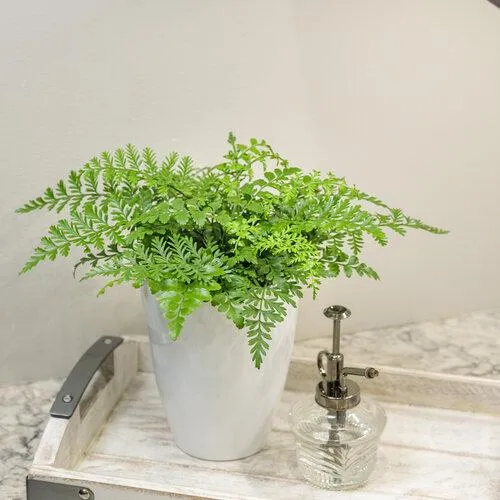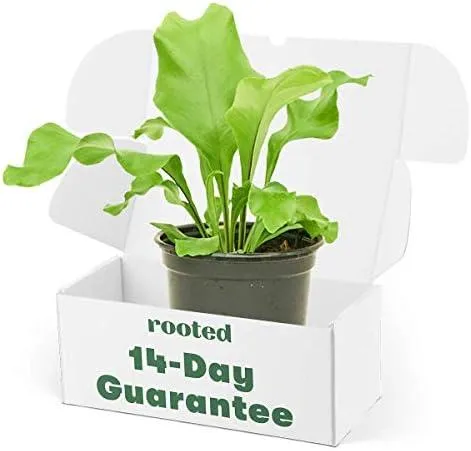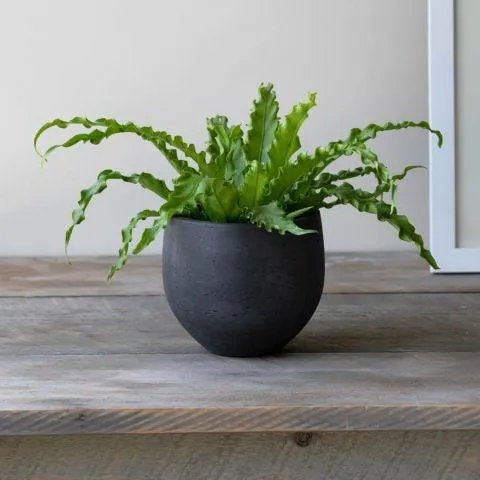Is Asplenium Plant Toxic to Cats?
If you’ve noticed your cat sniffing or chewing on your asplenium fern, you may be wondering whether this common houseplant poses a danger. Asplenium, also known as spleenwort, is in the large fern family that includes over 1,000 species. While non-toxic to humans, some varieties can potentially sicken felines. In this article, I’ll explore asplenium toxicity risks for cats and provide tips to keep your furry friend safe.
Which Asplenium Species Are Toxic?
- Asplenium nidus (bird’s nest fern): Considered moderately toxic if ingested by cats. Symptoms can include vomiting and diarrhea.
- Asplenium trichomanes (maidenhair spleenwort): Listed as potentially toxic with known poisonings reported. Symptoms are similar to A. nidus.
- Other Asplenium varieties: Data is limited but some experts suggest all types may cause upset stomach if eaten in large quantities.
The toxic compound in asplenium is unknown but likely an irritant or allergen rather than lethal poison. From my experience as a vet tech, mildly toxic exposures often produce only minor digestive issues treatable with home care. However, kittens or cats with underlying medical conditions may face worse problems. It’s best to assume all asplenium can sicken cats until proven otherwise.
Signs Your Cat Ate Asplenium
Keep an eye out for these potential symptoms within a few hours of ingesting asplenium:
- Vomiting
- Diarrhea
- Lethargy
- Loss of appetite
- Stomach pain
The signs generally appear quickly if your cat ingested enough asplenium to cause issues. Monitor closely and contact your vet right away if problems seem severe, like repeated vomiting or lethargy lasting over 12 hours. Early treatment improves outcomes.

What To Do If Your Cat Eats Asplenium
First, remove the fern from your home! Then try these steps:
- Induce vomiting only if you witnessed the ingestion within the last hour. Water or 3% hydrogen peroxide work well but don’t make your cat throw up if unsure when it ate.
- Call your vet or local animal poison control for guidance. They may recommend keeping your cat hydrated and watching for symptoms.
- Bring a sample of the ingested plant for positive ID if problems arise. Speedy treatment helps if toxicity occurs.
From my experience, mild asplenium exposures often resolve without medical care. But it’s smarter to get professional guidance than assume all will be fine. Early intervention prevents suffering. Watch your cat closely following potential ingestion.
Cat-Proof Your Home Plants
No plant is 100% cat-safe. To keep curious kitties away from potential toxins, try these strategies:
- Move all houseplants out of cat’s reach, like on high shelves well above scratching level.
- Cover soil surfaces with rocks to deter digging and eating dirt where plant pieces may lurk.
- When repotting, thoroughly clean work areas and wash hands to remove lingering soils containing plant parts that could later be ingested.
- Consider potting ferns in hanging baskets well above claw height if keeping them in living areas frequented by felines.
I once made the mistake of leaving a newly repotted asplenium on a low coffee table within pawing range of my cat. She must have eaten soil tracking plant material. Thankfully no ill effects, but it was a lesson! diligence prevents problems.

Should You Get Rid of Asplenium If You Have Cats?
This is a personal choice. While some asplenium varieties carry known or suspected toxic risks, mild exposures often cause no harm – but it’s impossible to predict a cat’s reaction. I’d suggest the following options:
- Safely display asplenium out of reach as described above.
- Choose a non-toxic fern variety if keeping plants where cats play.
- Consider removing asplenium from homes with kittens, elderly/sick cats more prone to issues.
- Weigh the enjoyment you get versus potential danger – no plant is worth an ill cat.
Ultimately it boils down to how much risk you’re comfortable taking on versus reward of owning the plant. From my experience, diligent cat-proofing can allow keeping toxics if you find asplenium aesthetically pleasing. But safer non-toxic options always minimize worry.
In summary, while asplenium typically only causes mild upset in cats, it’s impossible to predict a specific pet’s reaction. There are too many great non-toxic houseplants to choose toxics without proper safeguards. Baby your kitty – keep all plants out of paws’ reach or opt for 100% cat-friendly varieties indoors. With caution, you can still enjoy greenery alongside feline family.
I hope this helps answer your questions about asplenium toxicity risks for cats! Let me know if any other issues come to mind after reading my take on the topic.

Asplenium Plants and their Toxicity to Cats
| Plant Name | Toxicity Level | Symptoms if Ingested |
|---|---|---|
| Australian Asplenium | Moderately Toxic | Vomiting, diarrhea, lethargy |
| Bird’s Nest Fern | Potentially Toxic | Mild gastrointestinal upset |
| Lacy Tree Fern | Potentially Toxic | Potential oral irritation |
| Male Fern | Moderately Toxic | Vomiting, diarrhea, loss of appetite |
| Resurrection Plant | Potentially Toxic | Potential gastrointestinal upset |
| Spleenwort | Potentially Toxic | Potential mild gastrointestinal effects |
FAQ
-
Is asplenium toxic to cats?
Basically, asplenium ferns are somewhat poisonous to cats. If your kitty eats a decent chunk of it, they may get kinda sick with symptoms like vomiting or diarrhea. So it’s better to keep these plants out of paws’ reach!
-
What are the signs that a cat has eaten asplenium?
Some signs that Fluffy might have nibbled on asplenium include throwing up, having an upset tummy, or acting unusually tired. Their poop could also look weird. I’d keep an eye on them and call the vet if they seem really ill. Hopefully they just ate a tiny bit and it’ll pass on through without, like, an emergency visit!
-
How toxic is asplenium to cats?
While asplenium isn’t as hazardous as some other houseplants, it can still cause a cat some digestive distress if they gorge on a bunch of it. The toxicity appears to be mildly irritating to their system rather than seriously dangerous. Still, why take chances? It’s best to cat-proof your home and garden just to be safe!

-
What should I do if my cat eats asplenium?
If you catch Fluffy nibbling asplenium, remove it from their mouth promptly. Afterwards, you might want to induce vomiting to get rid of any remaining bits, unless the vet says otherwise when you give them a call. Stay with your kitty and monitor for symptoms, taking them in right away if they seem under the weather. With any luck, just a small taste won’t amount to much!
-
Are there any non-toxic ferns for cats?
Luckily, there are indeed some ferns that are benign for felines. Boston ferns, maidenhair ferns, and rabbit’s foot ferns appear to be safe choices. Just remember, no plant is “cat-proof” – so always pets-proof your home and garden space. And I guess check with your vet if you’re not 150% certain!
At the same time, it’s important not to go overboard worrying. Asplenium toxicity is mild for the most part. Still, why chance it when there are plenty of nice pet-safe plants to choose from? Do some research, ask your vet, and maybe hit up some garden centers for suggestions. With a little preventative effort, Fluffy can admire green growing things without monitoring for symptoms. How’s that for a pawsitive outcome?
